 |
| Consolidated PB2Y-2 Coronado patrol bomber of Patrol Squadron VP-13 in flight in 1941. |
The PB2Y
Coronado is a large flying boat patrol bomber designed by Consolidated
Aircraft, and used by the US Navy during World War II in bombing,
antisubmarine, medical/hospital plane, and transport roles. Obsolete by the end
of the war, Coronados were quickly taken out of service. Only one known example
remains, at the National Naval Aviation Museum at Naval Air Station Pensacola,
Florida. Before World War II large flying boats were important for long
distance international routes, as the ability to land on water without a
land-based airstrip was useful. It proved to be good supporting aircraft in the
Pacific War, which often required transport across long distance of oceans in
harm's way, to places with no prepared airstrips.
There
were two main configurations, one with several turrets including a prominent
ball turret in the nose with two 50-cal machine guns, and one unarmed, with a
clean nose.
The
aircraft had a unique place in history, bringing Admiral Nimitz to Tokyo Bay
for the signing of the Japanese surrender for World War II. Also, after the war
one was used by Hughes Aviation.
Design and Development
After
deliveries of the PBY Catalina, also a Consolidated aircraft, began in 1935,
the United States Navy began planning for the next generation of patrol
bombers. Orders for two prototypes, the XPB2Y-1 and the Sikorsky XPBS-1, were
placed in 1936; the prototype Coronado first flew in December 1937.
After
trials with the XPB2Y-1 prototype revealed some stability issues, the design
was finalized as the PB2Y-2, with a large cantilever wing, twin tail with very
marked dihedral, and four Pratt & Whitney R-1830 radial engines. The two
inner engines were fitted with four-bladed reversible pitch propellers; the
outer engines had standard three-bladed feathering props. Like the PBY Catalina
before it, the PB2Y's wingtip floats retracted to reduce drag and increase
range, with the floats' buoyant hulls acting as the wingtips when retracted.
The price of the PB2Y-2 was US$300,000, or approximately three times that of
the PBY Catalina.
Development
continued throughout the war. The PB2Y-3, featuring self-sealing fuel tanks and
additional armor, entered service just after the attack on Pearl Harbor and
formed most of the early-war Coronado fleet. The prototype XPB2Y-4 was powered
by four Wright R-2600 radials and offered improved performance, but the increases
were not enough to justify a full fleet update. However, most PB2Y-3 models
were converted to the PB2Y-5 standard, with the R-1830 engines replaced with single-stage
R-1830-92 models. As most existing PB2Y-3s were used as transports, flying low
to avoid combat, removing the excess weight of unneeded superchargers allowed
an increased payload without harming low-altitude performance.
A
prototype of the Consolidated XPB3Y variant was ordered, which would be a long
range version of the Coronado, but this was cancelled.
Type: Maritime patrol bomber
Manufacturer: Consolidated Aircraft
Status: Retired
Primary users:
United States Navy
Royal Air Force
Number built: 217
Introduction date: December 1940
First flight: 17 December 1937
Variants: Consolidated XPB3Y
Operational History
Coronados
served in combat in the Pacific with the United States Navy, in both bombing
and antisubmarine roles. PB2Y-5 Coronados carried out four bombing raids on
Wake Island between 30 January and 9 February 1944. However, most served as
transport and hospital aircraft, and additional tasks included executive
transport and search and rescue.
The
British Royal Air Force Coastal Command had hoped to use the Coronado as a
maritime patrol bomber, as it already used the PBY Catalina. However, the range
of the Coronado (1,070 miles) compared poorly with the Catalina (2,520 mi), and
the Short Sunderland (1,780 mi). Consequently, the Coronados supplied to the
RAF under Lend-Lease were outfitted purely as transports, serving with RAF
Transport Command. The 10 aircraft were used for transatlantic flights, staging
through the RAF base at Darrell's Island, Bermuda, and Puerto Rico, though the
aircraft were used to deliver vital cargo and equipment in a transportation
network that stretched down both sides of the Atlantic, from Newfoundland, to
Brazil, and to Nigeria, and other parts of Africa. After the war ended five of
the RAF aircraft were scrapped, one was already lost in collision with a Martin
PBM Mariner and the last four were scuttled off the coast of Bermuda in 1946.
In combat
missions PB2Y claimed five enemy aircraft shot down over the course of WWII.
Likewise, an example of one lost to combat is at Kerema Rhetto, Okinawa, 5 May
1945. An example of a search and rescue mission is that a PB2Y landed hard on
water of Kagoshima Bay to rescue a downed pilot. Unable to take off again, a
PBM Mariner picked up the crew and pilot, then scuttled the aircraft with a
strafe.
Coronados
served as a major component in the Naval Air Transport Service (NATS) during
World War II in the Pacific theater. Most had originally been acquired as
combat patrol aircraft, but the limitations noted above quickly relegated them
to transport service in the American naval air fleet also. By the end of World
War II, the Coronado was outmoded as both a bomber and a transport, and
virtually all of them were quickly scrapped by the summer of 1946, being melted
down to aluminum ingots and sold as metal scrap, or used as targets for fighter
gunnery practice.
After the
war some were used for civilian service; one is reportedly bought by Howard
Hughes to practice water landings for the 1947 flight of the Hughes Spruce
Goose.
Variants
The bulk
of the production was the PB2Y-3, with 210 produced it featured turrets.
Significant numbers of unarmed transport version were also produced or
converted from existing versions.
Coronado I: RAF Designation for PB2Y-3
XPB2Y-1: Prototype with four 1,050 hp
(780 kW) Pratt & Whitney XR-1830-72 Twin Wasps, engines, one built.
PB2Y-2: Evaluation variant with four
1,020 hp (760 kW) Pratt & Whitney R-1830-78 Twin Wasp engines, modified
hull and six 0.5 in (13 mm) guns, six built.
XPB2Y-3: One PB2Y-2 converted as
prototype for PB2Y-3.
PB2Y-3: Production variant with four
1,200 hp (890 kW) Pratt & Whitney R-1830-88 Twin Wasp engines and eight 0.5
in (13 mm) guns, 210 built.
PB2Y-3B: Lend-lease designation for
Royal Air Force aircraft.
PB2Y-3R: PB2Y-3s converted by Rohr
Aircraft Corp as freighters with faired-over turrets, side loading hatch, and
seating for 44 passengers, 31 built.
XPB2Y-4: One PB2Y-2 re-engined with
four 1,600 hp (1,200 kW) Wright R-2600 Cyclone 14 engines.
XPB2Y-5: The XP2BY-3 converted as
PB2Y-5 prototype.
PB2Y-5: PB2Y-3s converted with four
1,200 hp (890 kW) Pratt & Whitney R-1830-92 Twin Wasp engines, increased
fuel capacity and provision for RATOG (rocket-assisted take-off gear).
Crew: ten
Length: 79 ft 3 in (24.2 m)
Wingspan: 115 ft 0 in (35 m)
Height: 27 ft 6 in (8.4 m)
Wing area: 1,780 sq ft (165 m2)
Empty weight: 40,850 lb (18,530 kg)
Maximum takeoff weight: 66,000 lb (30,000 kg)
Powerplant: 4 × Pratt & Whitney R-1830-92 radial engines,
1,200 hp (900 kW) each
Maximum speed: 194 mph (310 km/h, 168 kn)
Cruise speed: 170 mph (272 km/h, 148 kn)
Range: 1,070 mi (1,720 km, 930 nmi) at 131 mph (210 km/h)
Service ceiling: 20,500 ft (6,250 m)
Guns:
6× .50 in (12.7 mm) M2 Browning machine guns in twin nose,
dorsal, and tail powered turrets
2× .50 in M2 Browning machine guns in manual waist mounts
Bombs:
2× Mark 13 torpedoes or
Up to 12,000 lb (5,400 kg) of bombs, housed in the wings
PB2Y-5R:
PB2Y-5s converted as unarmed transports, some fitted for medical evacuation
role. The medical evacuation version could hold up to 25 stretchers.
Operators
The main
operator was the United States Navy, and some served with the United Kingdom's
Royal Air Force. 5 served with United States Coast Guard. After the war there
was some civilian use also.
United Kingdom
Royal Air Force
No. 231 Squadron RAF
United States
United States Navy
FAW-2
FAW-3
FAW-5
FAW-14
VPB-1
VPB-4
VPB-13
VPB-15
VPB-100
VP-102
VR-2
VR-6
VR-8
VE-1
VH-1
United States Coast Guard
Wrecks
There
were many accidents with the PB2Y incidents of different types.
There is
a sunken PB2Y Coronado in Tanapag Lagoon of Saipan. This wreck has been studied
for marine archeology.
After the
capture of Ebeye from the Japanese, it was used as seaplane stopover for flying
boats transiting the Pacific. At least three Coronados crashed near Naval Air
Base Ebeye Island, at Kwajalein Atoll.
14
September 1944, a PB2Y-3 broke apart during practice landings, killing one person.
12
February 1945, a PB2Y-5R crashed on landing from a trip from Honolulu, ripping
off the nose and sinking claiming two lives.
Also, in
February 1944 a PB2Y ran into a reef while taxiing and subsequently broke up
and sank in the lagoon.
Some of
these wrecks were discovered in the early 21st century and in some cases are
visited by divers.
Additional
examples:
On 6 May
1942, a PB2Y crashed and sank in Pearl Harbor, Hawaii during an emergency
landing, claiming the lives of two.
On 27
December 1942 one crashed landing on the Salton Sea, killing 6.
On 21 May
1943 one crashed with the loss of all crew at Little Creek, Virginia, USA.
23 May
1943 a PB2Y ran out of fuel near Bermuda; on landing the right pontoon ripped
off and the aircraft rolled over and sank.
24 May
1943 a PB2Y broke in two when it was forced to land on the ground at San Mieuel
Rea, Mexico.
On 26
November 1943 a PB2Y crashed while landing during a training flight at NAS
Alameda, USA.
1 January
1944 nine perished in a crash in the Great Sound of Bermuda and another crash at
Bermuda occurred on 26 May 1943.
On 17
February 1944 a PB2Y engine failed during takeoff, causing it to crash into a
barracks, killing 2 on the ground and 7 of 12 on the aircraft.
Galapagos,
Ecuador, 17 July 1944 landing accident (nosing over) kills five.
31 July
1944, on takeoff from Funafuti Lagoon a wing clips a ship's jackstaff causing a
crash, killing 22.
On 17
October 1944 one crashed into a Coronado Island near San Diego, California.
On 6
December 1945 a PB2Y-5R (no. 7241) crashed at Canton island.
On 22
June 1945, a PB2Y landed at sea on a flight between Ebeye and Saipan. All were
rescued but the aircraft later sank.
Surviving Aircraft
BuNo 7099
– National Naval Aviation Museum, Naval Air Station Pensacola, Pensacola,
Florida.
In Popular Culture
Victor
Bergeron created a PB2Y cocktail for his Tiki bars (Trader Vic's) in honor of
World War II airmen.
Bibliography
"Coronados are Graveyard Bound" (PDF). Naval Aviation
News (267). September 1946.
Andrews, Hal (November–December 1989). "PB2Y
Coronado" (PDF). Naval Aviation News. 72 (1).
Bridgeman, Leonard (1946). "The Consolidated Vultee Model
29 Coronado". Jane's fighting aircraft of World War II. London: Studio.
Burney, Allan. Flying Boats of World War 2 (The Aeroplane &
Flight Magazine Aviation Archive Series). London: Key Publishing Ltd., 2015.
Green, William. War Planes of the Second World War, Volume
Five: Flying Boats. London: Macdonald & Co. (Publishers) Ltd., 1962 (Fifth
impression 1972).
Hoffman, Richard Capt. USN (ret.). Consolidated PB2Y Coronado
(Naval Fighters 85). Simi Valley, California, USA: Ginter Books, 2009.
March, Daniel J. (2000). British warplanes of World War II.
Rochester: Grange.
Mondey, David. The Hamlyn Concise Guide to American Aircraft of
World War II. London: Hamlyn Publishing Group Ltd., 1982 (republished 1996 by
the Chancellor Press, reprinted 2002).
Further Reading
Pomeroy, Colin A. (July–August 2002). "Bermudian 'Boats:
Snapshots of the RAF Flying-boat Era in Bermuda". Air Enthusiast. No. 100.
pp. 40–45.
 |
| The Consolidated XPB2Y-1 Coronado (BuNo 0453) in 1938. Note the original single tail configuration. |
 |
| The original single-tailed XPB2Y-1 prototype, 1937. |
 |
| Consolidated XPB2Y-1 Coronado in front of the Consolidated plant. |
 |
| Consolidated XPB2Y-1 Coronado prototype ready for test flight in 1938. |
 |
| Consolidated XPB2Y-1 Coronado rough water tests on 21 December 1938. |
 |
| Consolidated XPB2Y Coronado (note the single tail instead of the production twin tail). |
 |
| Consolidated PB2Y Coronado. |
 |
| Consolidated PB2Y Coronado. |
 |
| Consolidated PB2Y Coronado. |
 |
| Consolidated PB2Y Coronado. |
 |
| Consolidated XPB2Y-1 Coronado dynamic tank model. 12 July 1938. |
 |
| Consolidated XPB2Y-1 Coronado wind tunnel model twin rudder. 17 June 1938. |
 |
| Consolidated XPB2Y-1 Coronado manufacturer’s model. |
 |
| Interior of Consolidated XPB2Y-1 Coronado, bow compartment, looking aft, starboard side. 4 December 1937. [The white lines on some of the photos in this article appear to have been caused by the improper storage of the negatives.] |
 |
| Consolidated XPB2Y-1 Coronado, 1,000-pound bomb being hoisted to torpedo rack underneath wing. 30 November 1939. |
 |
| Interior of Consolidated XPB2Y-1 Coronado, .30-cal. waist guns, stowed position. |
 |
| Consolidated XPB2Y-1 Coronado .50-cal. waist guns in firing position. 8 December 1937. |
 |
| Consolidated XPB2Y-1 Coronado nose turret. |
 |
| Consolidated XPB2Y-1 Coronado stern .50-cal. machine gun in firing position. |
 |
| Interior of Consolidated XPB2Y-1 Coronado, equipment installation on port side of hull between pilot and flight engineer. 9 August 1939. |
 |
| Interior of Consolidated XPB2Y-1 Coronado, radio, navigator compartment, looking forward. |
 |
| Interior of Consolidated XPB2Y-1 Coronado. |
 |
| Interior of Consolidated XPB2Y-1 Coronado. |
 |
| Interior of Consolidated XPB2Y-1 Coronado, navigator and flight engineer compartment, looking aft. |
 |
| Interior of Consolidated XPB2Y-1 Coronado, pilots’ controls on flight deck. |
 |
| Interior of Consolidated XPB2Y-1 Coronado. |
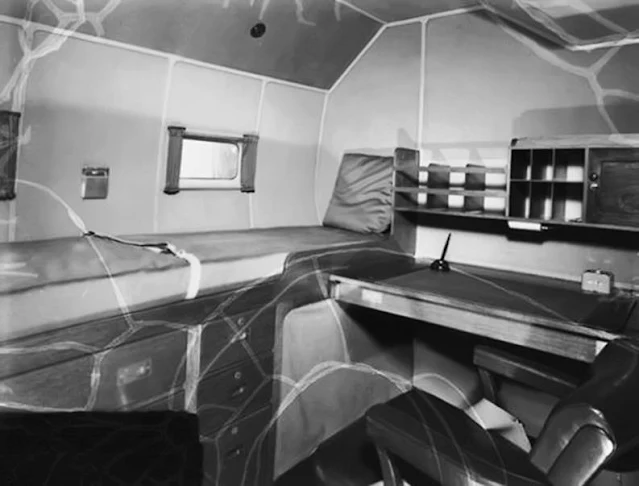 |
| Interior of Consolidated XPB4Y-1 Coronado, officer’s quarters. |
 |
| Consolidated XPB2Y-1 Coronado. |
 |
| Consolidated XPB2Y-1 Coronado. |
 |
| Consolidated XPB2Y-1 Coronado BuNo 0453 on August 3, 1938. |
 |
| Consolidated XPB2Y-1 Coronado BuNo 0453 on August 3, 1938. |
 |
| Consolidated XPB2Y-1 Coronado BuNo 0453 on August 3, 1938. |
 |
| The U.S. Navy Consolidated XPB2Y-1 Coronado flying boat (BuNo 0453) at Naval Air Station Anacostia, Washington, D.C., on 8 November 1938. The aircraft had originally been fitted with a single tail, but it had to be reconstructed with a twin tail and a new under hull. |
 |
| Prototype XPB2Y-1 BuNo 0453 anchored on the water. |
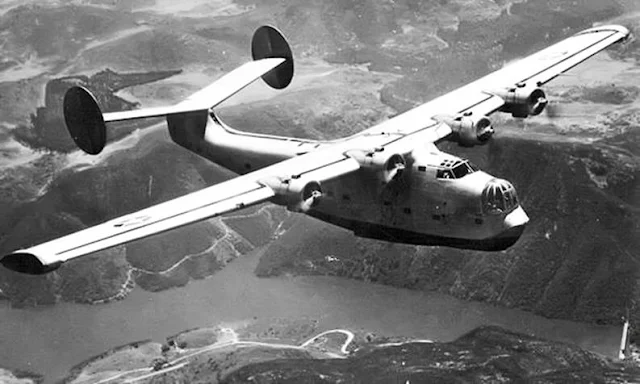 |
| The U.S. Navy Consolidated XPB2Y-1 Coronado prototype (BuNo 0453) in flight. Circa 1939. |
 |
| Prototype Consolidated XPB2Y-1 Coronado BuNo 0453. |
 |
| Consolidated XPB2Y-1 Coronado on 30 April 1940. |
 |
| Consolidated XPB2Y-1 of Aircraft Scouting Force in the Clipper Lagoon at Treasure Island. |
 |
| The U.S. Navy Consolidated XPB2Y-1 Coronado prototype (BuNo 0453) of Aircraft Scouting Force. The aircraft had originally been fitted with a single tail, but it had to be reconstructed with a twin tail and a new under hull. Circa 1939. |
 |
| Consolidated PB2Y-1 Coronado, Aircraft Scouting Force. |
 |
| Consolidated PB2Y Coronado. |
 |
| Consolidated PB2Y Coronado. |
 |
| Consolidated PB2Y Coronado. |
 |
| Consolidated PB2Y Coronado in flight. |
 |
| Consolidated PB2Y Coronado in flight. |
 |
| Consolidated PB2Y Coronado in flight. |
 |
| Consolidated PB2Y Coronado in flight. |
 |
| Consolidated PB2Y Coronado in flight. |
 |
| Consolidated PB2Y Coronado in flight. |
 |
| Consolidated PB2Y Coronado in flight. |
 |
| Interior of Consolidated PB2Y Coronado, flagship officer’s quarters, looking aft from Bulkhead No. 5. 9 August 1939. |
 |
| Interior of Consolidated PB2Y Coronado, waist machine gun position. |
 |
| Interior of Consolidated PB2Y Coronado, ventral gun position. |
 |
| Consolidated PB2Y Coronado, upper .30-cal. machine gun turret. |
 |
| Interior of Consolidated PB2Y Coronado. |
 |
| A Consolidated PB2Y-2 Coronado operated by Patrol Squadron VP-13 (Aircraft 13-P-1) BuNo 1633. The photo was taken in November 1940. Note that the plane is painted in the colorful pre-war scheme. |
 |
| Consolidated PB2Y-2 Coronado BuNo 1633 13-P-1 of VP-13 on beaching gear. |
 |
| Consolidated PB2Y-2 Coronado BuNo 1633 13-P-1 of VP-13. |
 |
| Consolidated PB2Y-2 Coronado BuNo 1633 13-P-1 of VP-13. |
 |
| Consolidated PB2Y-2 Coronado of Patrol Squadron VP-13 (aircraft 13-P-1, BuNo 1633) in flight. The photo was taken in November 1940, note that the plane is painted in the colorful pre-war scheme. |
 |
| Another view of Consolidated PB2Y-2 Coronado of Patrol Squadron VP-13 (aircraft 13-P-1, BuNo 1633) in flight. The photo was taken in November 1040, note that the plane is painted in the colorful pre-war scheme. |
 |
| Consolidated PB2Y-2 Coronado BuNo 1633 13-P-1 of VP-13 in colorful pre-war scheme getting ready to move off the seaplane ramp into the water for a takeoff. |
 |
| Consolidated PB2Y-2 Coronado BuNo 1633 13-P-1 of VP-13. |
 |
| Consolidated PB2Y Coronado of VP-13 on the seaplane ramp at a naval air station. |
 |
| Consolidated PB2Y-3 Coronado, circa 1941. |
 |
| Consolidated PB2Y-3 Coronado, circa 1941. |
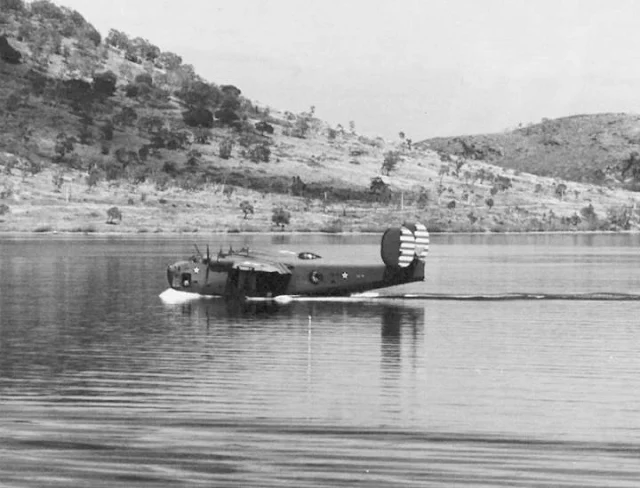 |
| Consolidated PB2Y-2 Coronado at Nouméa Harbor, New Caledonia, on March 11, 1942. |
 |
| Consolidated PB2Y-2 Coronado in flight. |
 |
| Consolidated PB2Y-2 Coronado. |
 |
| Sailors hose down a Consolidated PB2Y Coronado to remove salt water after a flight. |
 |
| Consolidated PB2Y Coronado of VP-13. |
 |
| Consolidated PB2Y-2 Coronado of VP-13, circa 1941. |
 |
| Consolidated PB2Y Coronado emptying the bilge or dumping fuel. |
 |
| Still from movie footage of a Consolidated PB2Y Coronado landing on water. |
 |
| Still from movie footage of a Consolidated PB2Y Coronado in flight in pre-war markings. |
 |
| Consolidated PB2Y-2 Coronado, Aircraft 13-P-3 of VP-13 in 1941. |
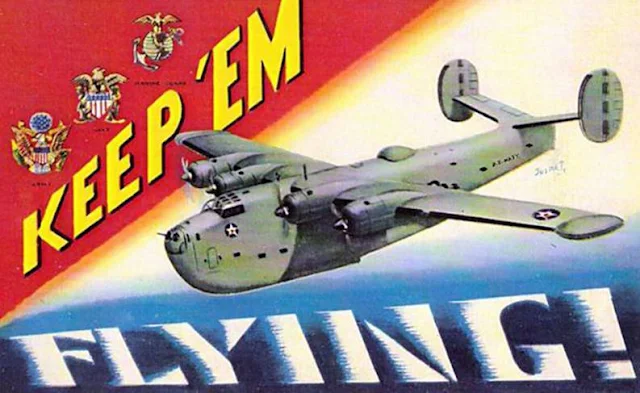 |
| Post card with Consolidated PB2Y Coronado, circa 1939. |
 |
| Assembly line workers attaching a stabilizer float to the wing of a PB2Y Coronado. The PB2Y-3 folds up her stabilizer floats to form the square tips of the wings during flight, decreasing the drag. |
 |
| Workers at the Consolidated plant taking a break next to a PB2Y Coronado under camouflage netting. |
 |
| Another photo of the same workers at the Consolidated plant taking a break next to a PB2Y Coronado under camouflage netting. |
 |
| Workers on a lunch break near a PB2Y Coronado outside the Consolidated plant. |
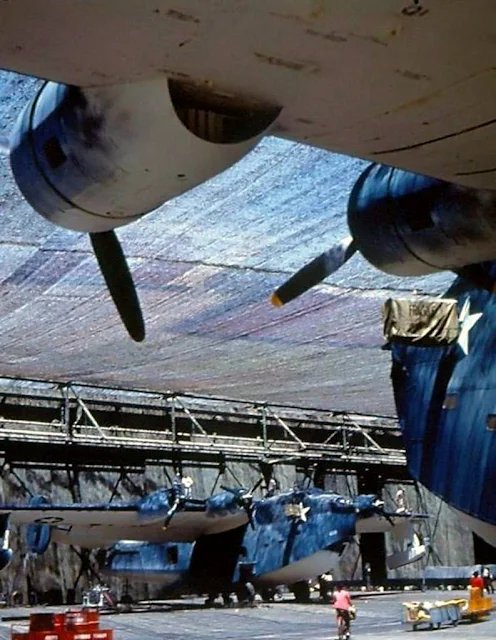 |
| PB2Y Coronados undergoing final inspection outside the Consolidated plant under camouflage netting. |
 |
| Shown here are Consolidated PB2Y Coronados under construction at the company’s San Diego, California, plant in July 1943. Still wary of aerial attacks by the Japanese, the work area is covered by camouflage netting. |
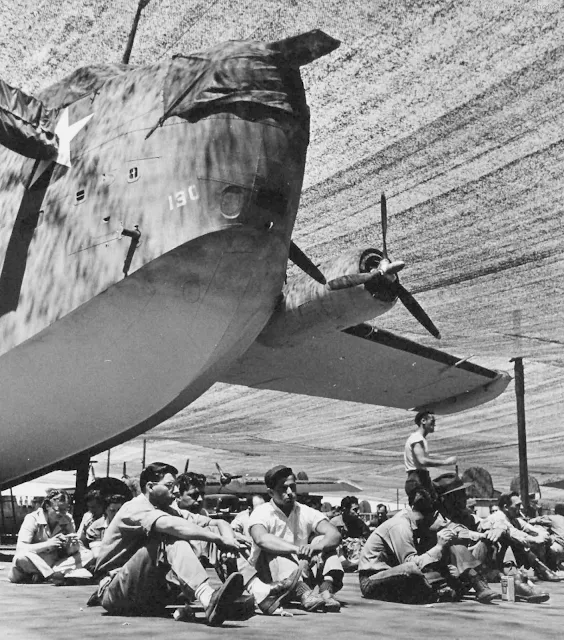 |
| PB2Y Coronado at the Consolidated Vultee Plant in Downey, California, in August 1943. |
 |
| Consolidated PB2Y-3 Coronado. |
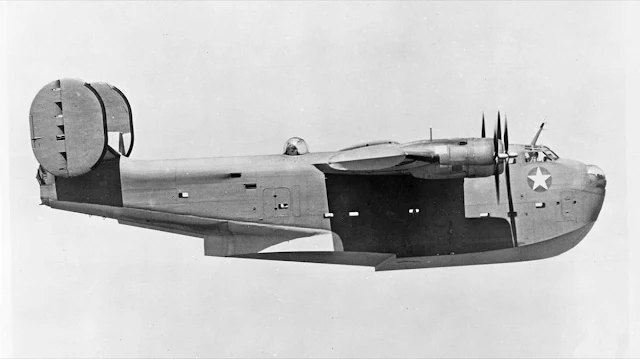 |
| A Consolidated PB2Y-1 or -3 Coronado in flight, about 1942. |
 |
| Consolidated PB2Y-5R Coronado taking off. The photo was published in April 1943. |
 |
| Consolidated PB2Y-5R Coronado on a take-off run. |
 |
| Consolidated PB2Y-3 Coronado. |
 |
| Consolidated PB2Y Coronados. |
 |
| Consolidated PB2Y-2 Coronado. |
 |
| A U.S. Navy Consolidated PB2Y-3R Coronado transport aircraft loads cargo at the Pan American Airways dock, Treasure Island, California, in January 1943. This Naval Air Transport Service plane was operated by Pan Am. Note the U.S. Marine Corps poster on the Railway Express Agency truck at left. The San Francisco Bay Bridge and Yerba Buena Island are in the background. (U.S. Navy photo 80-G-K-1149 from Naval History & Heritage Command) |
 |
| Landing boat carrying a wounded soldier approaches a Consolidated PB2Y Coronado waiting to evacuate the wounded from newly captured Makin. |
 |
| Landing boat takes wounded to a Coronado for evacuation at Makin. |
 |
| Beaching a Consolidated PB2Y-3 Coronado at NAS Banana River, Florida in 1943. |
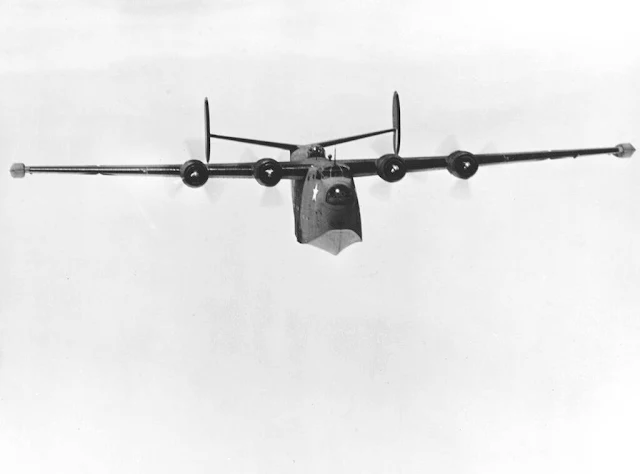 |
| Head-on view of a U.S. Navy Consolidated PB2Y(-3?) Coronado, circa 1942. |
 |
| PB2Y Coronados on the assembly line at Consolidated assembly line. |
 |
| Consolidated XPB2Y-1 Coronado with crew. |
 |
| Crew of Consolidated XPB2Y-1 Coronado. |
 |
| Consolidated PB2Y-5 Coronado making a jet-assisted take off at San Diego. |
 |
| Consolidated PB2Y-5 Coronado. A Consolidated PB2Y-3 or -5 of Patrol Squadron VP-15 in flight, 1944/45. Cruising off San Diego, California. |
 |
| A Consolidated PB2Y-3 or -5 of Patrol Squadron VP-15 in flight, 1944/45. Cruising off San Diego, California. |
 |
| Consolidated PB2Y Coronado moored at a naval air station. |
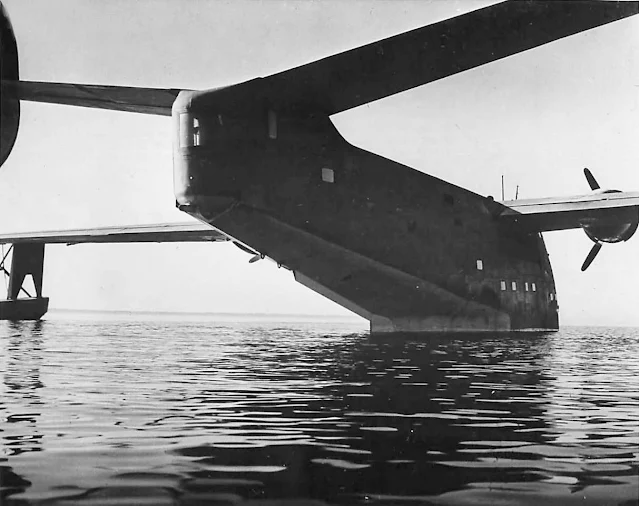 |
| Consolidated PB2Y-3R anchored on the water. |
 |
| Consolidated PB2Y Coronado at Ebeye Island seaplane base. |
 |
| Ebeye Island seaplane base. |
 |
| A Coronado takes off in whitecaps. Above the cockpit is the fairing for ASV (airborne surface vessel) search radar. |
 |
| Consolidated PB2Y-3 Coronado at John Rogers Airport Seaplane Port in February 1945. |
 |
| Consolidated PB2Y Coronado in flight at Naval Air Station Honolulu, Hawaii on September 2, 1945. |
 |
| Consolidated PB2Y-3 or -5 Coronado parked, 16 January 1945. |
 |
| U.S. Navy Consolidated PB2Y-3 Coronado assigned to Patrol Bombing Squadron VPB-1 at Naval Auxiliary Air Facility Galapagos on Seymour Island, from which the squadron flew missions patrolling the Pacific approaches to the Panama Canal. Circa 1944-45. |
 |
| Fourteen U.S. Navy Consolidated PB2Y-5 Coronado planes of patrol squadrons VP-13 and VP-102 anchored in the submarine basin at Sand Island, Midway Atoll, on 29 January 1944. These aircraft carried out four bombing raids on Wake Island between 30 January and 9 February 1944. 50 tons of ordnance were dropped without sustaining any casualties. |
 |
| Six U.S. Navy Consolidated PB2Y-5 Coronado flying boats of Patrol Bomber Squadron VPB-4 in flight in July 1945. VPB-4 at that time trained replacement crews and made shuttle flights between NAS North Island, California, and NAS Kaneohe Bay, Hawaii. |
 |
| View of facilities on Sand Island, Midway Atoll, as seen from the top of the wing of a U.S. Navy Consolidated PB2Y-5 Coronado of Patrol Squadron VP-13, in 1944. The photo may have been taken in early 1944, when fourteen PB2Ys of VP-13 and VP-102 carried out four bombing raids on Wake Island between 30 January and 9 February 1944. 50 tons of ordnance were dropped without sustaining any casualties. |
 |
| Seaplane tender USS Kenneth Whiting (AV-14) at anchor at an unknown location. She is painted in camouflage scheme Measure 32/8x and has a PB2Y Coronado on her after deck. |
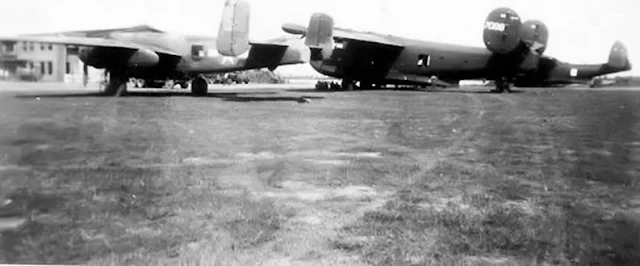 |
| PB2Y BuNo 7099 on the tarmac at Lung Hwa. |
 |
| Fleet Admiral C.W. Nimitz (center) aboard PB2Y BuNo 7073, 29 August 1945, getting his first view of the Japanese coastal area near Yokosuka Naval Base. This was the flight from Saipan to Tokyo Bay for the Japanese Surrender Ceremonies. |
 |
| Fleet Admiral Chester W. Nimitz, U.S. Navy, Commander in Chief, Pacific, and Pacific Ocean Areas arrives at Tokyo Bay in a Consolidated PB2Y-5R Coronado seaplane, 29 August 1945. The battleship USS Missouri (BB-63), Third Fleet Flagship, is in the center background. (Official U.S. Navy photo NH 96809 from the U.S. Navy Naval History and Heritage Command) |
 |
| Fleet Admiral C.W. Nimitz (center) and Marine Corps Commandant General Vandegrift (left) departing PB2Y BuNo 7073 along with five other admirals and generals and staff heading for the battleship USS South Dakota, Nimitz’s flagship while awaiting the surrender ceremonies aboard the USS Missouri on 2 September 1945. |
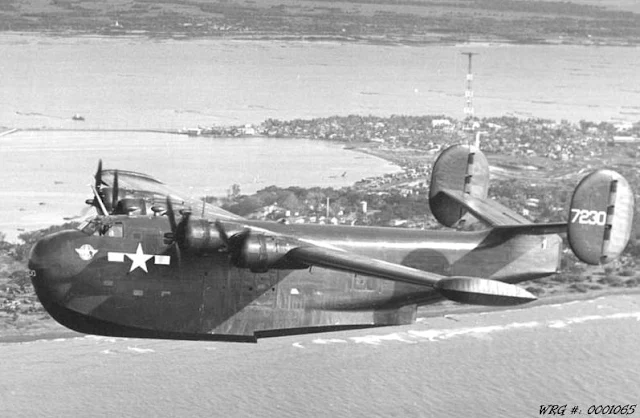 |
| Consolidated PB2Y-3 Coronado BuNo 7230 above San Diego. Note the pilot’s side window is open. |
 |
| Consolidated PB2Y-3 Coronado BuNo 7078 taxiing on the water. Nose has the words “Contract Operation.” December 1944. |
 |
| Consolidated PB2Y-5 Coronado BuNo 7179. |
 |
| Another view of Consolidated PB2Y-5 Coronado BuNo 7179. |
 |
| Another view of Consolidated PB2Y-5 Coronado BuNo 7179. |
 |
| Consolidated PB2Y-5H using JATO take off just lifting off the water. This ambulance version has the latest type radome. |
 |
| Consolidated PB2Y Coronado. |
 |
| President Franklin D. Roosevelt inspects U.S. Arsenal of Democracy: In a 8.700 mile tour of the United States war industries and centers of the U.S. Armed Forces, President Roosevelt received a first-hand picture of American war production. At the end of the coast-to-coast journey, he said that he was deeply impressed by the progress of the nation’s war program. In some instances, he said, factories were running ahead of schedule. Mr. Roosevelt listed 26 industrial, Army and Navy establishments during the two-week trip. Shown: The Presidential party passes under the wings of a line a of U.S. Navy patrol bombers at a West Coast war plant. The President is in the rear of the first car. Office of War Information Collection. (National Museum of the U.S. Navy 208-PU-171A-26) |
 |
| “Keep ‘Em Flying” postcard with PB2Y, circa 1942. |
 |
| A U.S. Navy Consolidated PB2Y-5 Coronado in flight over the California seacoast, circa in 1945. (US Navy photo from the USS Takanis Bay (CVE-89) World War II cruise book) |
 |
| Consolidated XPB2Y-1 BuNo 0463 at San Diego. (SDASM Archives) |
 |
| Consolidated PB2Y Coronado being loaded. “Contract Operation” on nose. |
 |
| The same Coronado as in the previous photo, operated as a contract freighter by Pan American Airways during World War II, shows the unusual configuration of four-blade Curtiss Electric propellers on the inboard engines for reverse pitch efficacy. |
 |
| The same Coronado as in the previous photo, operated as a contract freighter by Pan American Airways during World War II. |
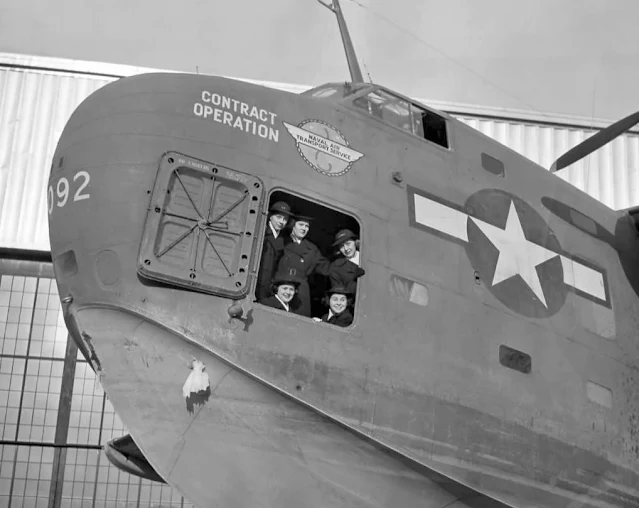 |
| Another Coronado operated as a contract freighter by Pan American Airways during World War II, with WAVES from Hunter College, during a visit to LaGuardia, February 1944. |
 |
| Consolidated PB2Y Coronado. |
 |
| The pilot of a Consolidated PB2Y-3 Coronado stands in the cockpit as sailors make the plane ready to take on fuel from a tender at Tinian in the Marianas Islands. Note the “kill” marking on the nose in front of the cockpit. |
 |
| Cockpit of Consolidated PB2Y Coronado |
 |
| Consolidated PB2Y-3 Coronado with experimental installation of integral JATO (Jet-Assisted Take-Off) motors in the rear step of the hull. |
 |
| Consolidated PB2Y-3 Coronado with crew. |
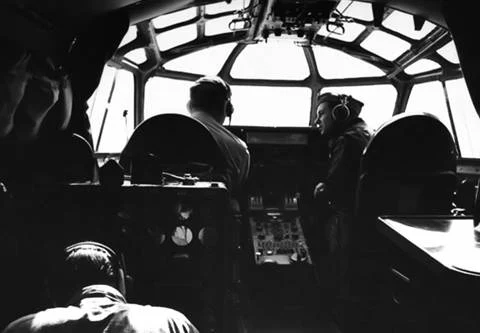 |
| Cockpit of Consolidated PB2Y Coronado. |
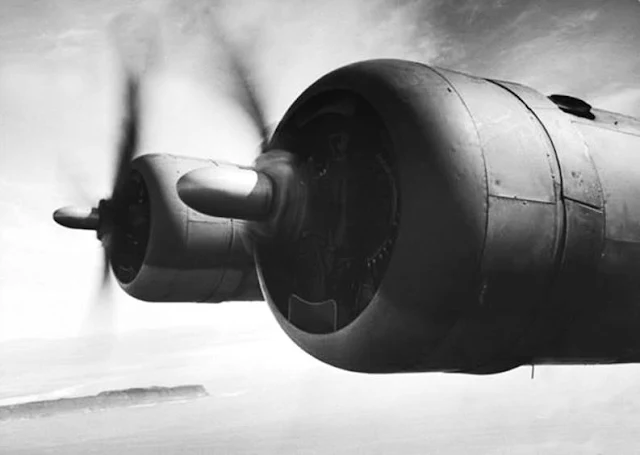 |
| View of starboard engines of a Consolidated PB2Y Coronado. |
 |
| Six bombs on underside of port wing of Consolidated PB2Y Coronado. |
 |
| Bombs Away! |
 |
| Pilot in the cockpit of a Consolidated PB2Y Coronado. |
 |
| An Imperial Japanese Navy Mitsubishi G4M ("Betty") bomber is burning, as it is shot down by a U.S. Navy Fleet Air Wing 2 (FAW-2) Consolidated PB2Y-3 Coronado patrol bomber, in the Central Pacific. The Japanese plane wears the number "72" on its tail fin. The photograph was released on 22 May 1944. (Official U.S. Navy photo 80-G-238877 from the U.S. Navy Naval History and Heritage Command) |
 |
| Consolidated PB2Y-5H Coronado ambulance. |
 |
| Consolidated PB2Y-3R Coronado (BuNo 7239) four-engine long-range maritime reconnaissance bomber flying boat was developed for the U.S. Navy and first flown in 1937. It had a crew of ten, and armament consisting of eight .50 caliber machine guns, and it carried eight 1,000 pound bombs internally and four 1,000 pound bombs, four 650 pound depth charges, or two torpedoes externally. It flew at speeds of 223 miles per hour and had a range of 1,370 miles. |
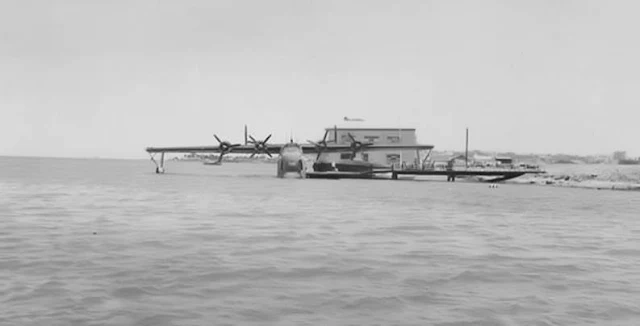 |
| Consolidated PB2Y Coronado. |
 |
| Consolidated PB2Y Coronado. |
 |
| Coast Guard personnel pictured during operations to recover a Consolidated PB2Y Coronado that lost a wing tip float on 29 October 1943. Note the Coast Guard flag on the launch. |
 |
| Another view of Coast Guard personnel pictured during operations to recover a Consolidated PB2Y Coronado that lost a wing tip float on 29 October 1943. |
 |
| NATS Consolidated PB2Y Coronado prior to being beached by a NAB beaching crew, Pacific Theater, 1944. |
 |
| Consolidated PB2Y Coronado with officers and men of Patrol Bombing Squadron 15 (VB 15). |
 |
| A U.S. Navy Consolidated PB2Y-5R Coronado (BuNo 7241) in flight, circa 1944. This aircraft had a crash landing on 6 December 1944 at Kanton Island, Phoenix Islands, while in service with NATS-2. |
 |
| Consolidated PB2Y-3 Coronado on beaching gear. |
 |
| Consolidated PB2Y Coronados. |
 |
| Another view of the same two Coronados. |
 |
| Consolidated XPB2Y-6 Coronado fitted with Wright R-2600 Twin Cyclone engines delivered to the Navy on December 30, 1944. |
 |
| Consolidated PB2Y-5 Coronado hoisted aboard a seaplane tender. |
 |
| Consolidated PB2Y-3 Coronado at Kaneohe Bay, Hawaii. |
 |
| Consolidated PB2Y-5 Coronado during takeoff on water. |
 |
| Consolidated PB2Y-3 Coronado co-pilot controls. |
 |
| Cockpit of Consolidated PB2Y-3 Coronado. |
 |
| Interior of Consolidated PB2Y-3 Coronado behind pilot’s seat. |
 |
| Interior of Consolidated PB2Y-3 Coronado behind pilot’s seat looking towards cockpit. |
 |
| Interior of Consolidated PB2Y-3 Coronado, cockpit looking aft. |
 |
| Interior of Consolidated PB2Y-3 Coronado, starboard side of cockpit looking aft. |
 |
| Interior of Consolidated PB2Y-3 Coronado, looking forward, ladder up to the flight deck, crew’s bunks bottom left. |
 |
| Interior of Consolidated PB2Y-3 Coronado, looking forward towards cockpit. |
 |
| Interior of Consolidated PB2Y-3 Coronado, ladder up to flight deck. |
 |
| Interior of Consolidated PB2Y-3 Coronado, flight engineer’s station on flight deck. |
 |
| Interior of Consolidated PB2Y-3 Coronado, flight deck, looking forward towards cockpit. |
 |
| Consolidated PB2Y-3 Coronado, co-pilot’s station on flight deck. |
 |
| Interior of Consolidated PB2Y-3 Coronado, pilots’ controls in cockpit. |
 |
| Consolidated Coronado, Coastal Command. Ten of these aircraft, designated PB2Y-3B, were supplied to the RAF and based initially at Beaumaris, Anglesey, intended for service with Coastal Command. Their stay there was only brief, for they were transferred to No. 231 Squadron of Transport Command and Used from June 1944 to operate freight services. |
 |
| Consolidated PB2Y Coronado I “Beaumaris” of No. 231 Squadron RAF based at Dorval, Canada, undergoes a major inspection at the Marine Base, Bermuda. Circa 1944-45. |
 |
| Consolidated PB2Y Coronado I (JX496). |
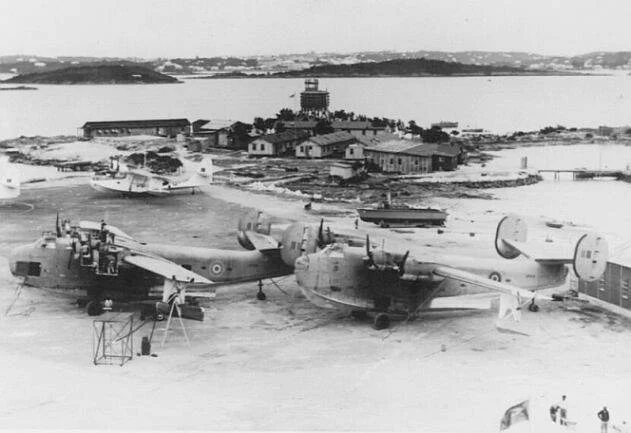 |
| Flying boats of RAF Transport (the two PB2Y Coronado aircraft) and Ferry Commands on the tarmac at RAF Darrell’s Island during the Second World War. |
 |
| Consolidated Coronado GR Mark I (modified), JX495, at the Marine Aircraft Experimental Establishment, Helensburgh, Dunbartonshire. The aircraft subsequently served as a long-range transport with No. 231 Squadron RAF. |
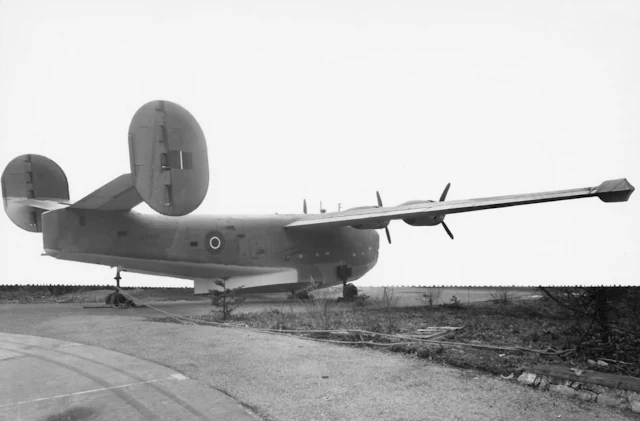 |
| Another view of Consolidated Coronado GR Mark I (modified), JX495, at the Marine Aircraft Experimental Establishment, Helensburgh, Dunbartonshire. |
 |
| A Consolidated PB2Y-5R Coronado owned by Hughes Aircraft, probably late 1940s. This aircraft, BuNo 7099, is now undergoing restoration at the U.S. Navy National Museum of Naval Aviation at Pensacola, Florida. It was delivered to the U.S. Navy on 12 April 1943 and was outfitted as a flag transport. It shuttled high-ranking officers back and forth between Hawaii and the U.S. West Coast. In August 1945 it transported Rear Admiral Forrest P. Sherman (Deputy CINCPAC) to Tokyo Bay to attend the formal surrender ceremonies ending the Second World War. In the following months it was ordered to China to support the occupation of that nation. It was damaged in a Hurricane and flown back to the United States in November 1945. When it was stricken from the Navy inventory in August 1946 it was bought by Howard Hughes. It was kept in flying condition until the early 1960s and donated to the National Museum of Naval Aviation in 1977. |
 |
| The surviving transport Coronado in the USA. This one delivered Nimitz to Tokyo for the signing of the Japanese surrender (VJ day). (Rob Bixby, 30 Apr 2017) |
 |
| Wartime identification drawing of PB2Y Coronado. |
 |
| Hatches open for air flow with a fire bottle at the ready, a typical Consolidated PB2Y Coronado scene of the day. |
 |
| Consolidated PB2Y-5R Coronado taking off. |
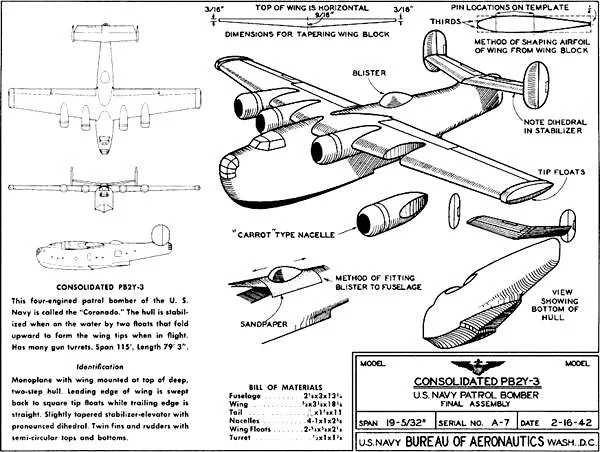 |
| Final assembly instructions for building a model of the Consolidated PB2Y-3 U.S. Navy Patrol Bomber. (U.S. Navy Bureau of Aeronautics) |
 |
| Instructions for building a model of the Consolidated PB2Y-3 U.S. Navy Patrol Bomber. (U.S. Navy Bureau of Aeronautics) |
 |
| Consolidated PB2Y-2 Coronado. |
 |
| Assembling a Coronado. Largest mass-produced flying boat in U.S. Naval service, the 33-ton PB2Y takes shape on a four-part moving production line at the Consolidated-Vultee San Diego plant. While fuselages move down the 431-foot primary assembly line, wings grow on another line. |
 |
| Consolidated PB2Y-5R Coronado. |
 |
| Consolidated PB2Y-5 Coronado cutaway view. |
 |
| Consolidated PB2Y-3 Coronado. |
 |
| Consolidated PB2Y-3 Coronado. |
 |
| Consolidated PB2Y Coronado. |















































































































































































































